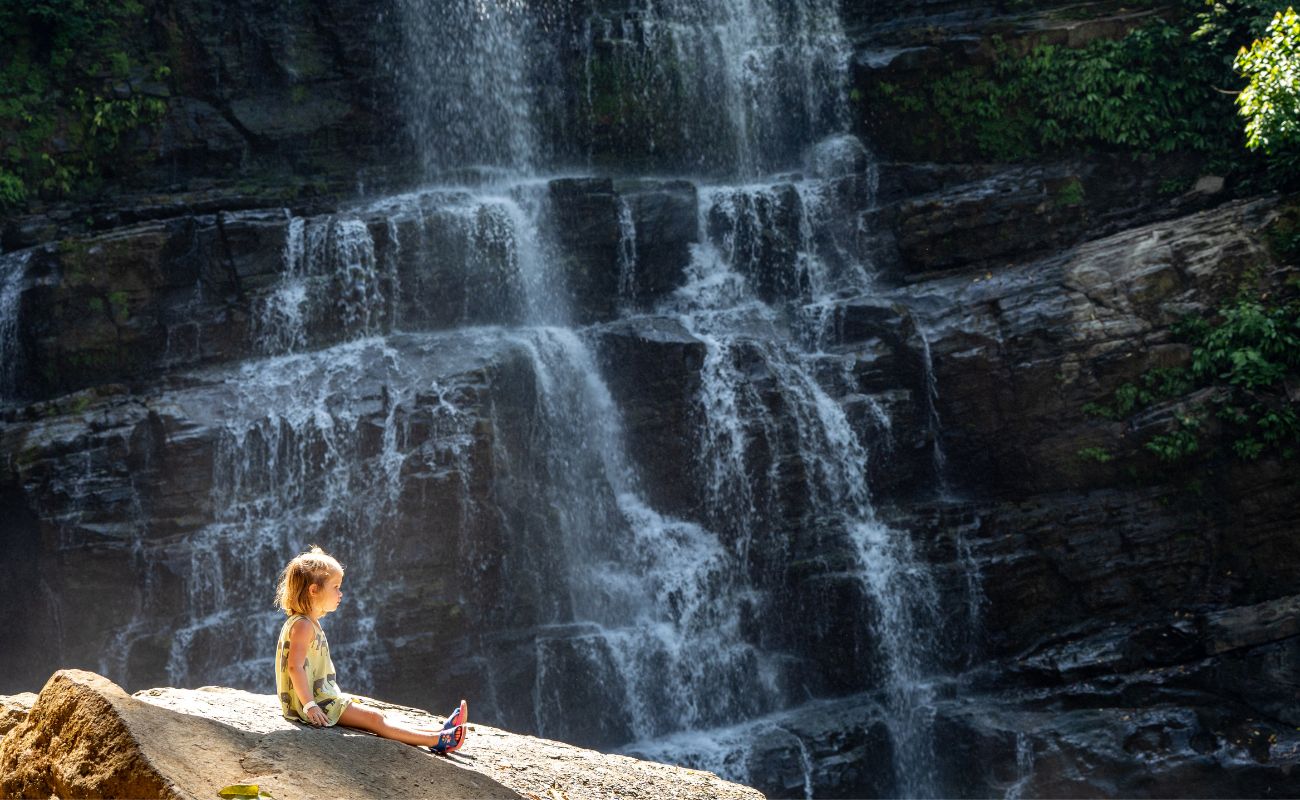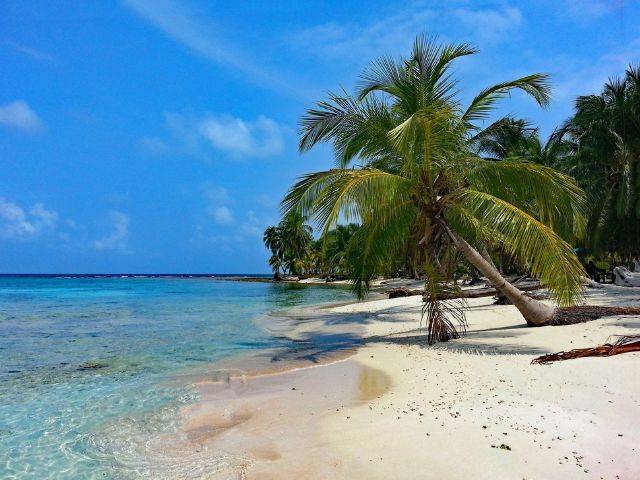Costa Rica, with its lush landscapes and vibrant wildlife, offers a dynamic and diverse experience every month of the year. The towns of Manuel Antonio and Quepos, nestled on the Pacific Coast, are no exception. Here’s a month-by-month guide to what you can expect in this tropical haven.

January: The Pinnacle of Sunshine
January is the heart of the high season with brilliant sunshine paving the way for perfect beach days. Migratory birds adorn the skies, making it a birdwatcher’s paradise. Although it’s crowded, the vibrant atmosphere is part of the charm, as visitors from around the globe converge to enjoy the pristine beauty of Manuel Antonio National Park and the warm sands of Playa Espadilla.

February: Romance and Revelry
Continuing the dry season, February in Manuel Antonio is marked by clear skies and calm seas. It’s an ideal time for couples seeking a romantic getaway, with Valentine’s Day festivities adding a touch of celebration.

Prices remain high due to the influx of tourists, but the quality of wildlife sightings and outdoor activities justifies the cost.
March: A Burst of Biodiversity
As the dry season persists, March offers a thriving natural world in full display. The forests surrounding Quepos are alive with flora and fauna, and the ocean is teeming with marine life, perfect for snorkeling and diving adventures.

Be prepared for higher prices and book excursions early to secure your spot.
March 2024 also brings Semana Santa (Holy Week), one of Costa Rica’s most significant cultural events. Manuel Antonio is abuzz with processions and festivities. And the beach will be full with Costa Rican tourists.

April: Getting a bit of peace after the crowds
Costa Rica’s climate transitions gracefully in April, when the dry season gives way to the rainy season’s early showers. Mornings begin sunny and bright before afternoon rains refresh the landscape with emerald hues. The country transitions from rich brown tones to lush greens and brilliant tropical hues.
April temperatures range from the mid 70s to the low 80s Fahrenheit, making it excellent for beach vacations or explorations in lush jungles. With the busy season’s peak crowds departed, April provides a more tranquil, less congested time to see Costa Rica’s natural marvels.

The month offers the ideal combination of accessibility before the heavier rains approach while still taking advantage of the landscape’s rejuvenation. Visitors can relax on peaceful, scenic beaches or explore the thriving interior without the extreme heat or tourism hordes in previous months.
In essence, April in Costa Rica allows visitors to explore the country’s magnificent richness in a more relaxing, revitalizing mood following the busy high season. Nature puts on a bright, vibrant show, while colder temperatures and fewer tourists allow for a more in-depth absorption into the essence of pura vida – the pure existence.
May: The Tranquil Transition
May marks the onset of the green season, with rain showers painting the landscape in vibrant hues.
Tourist numbers dwindle, leading to more competitive prices and less crowded spaces. It’s a time of renewal, where you can enjoy the region’s natural splendor in peace.
June: The Lush Life
June welcomes the green season as rainforests reach their lushest and waterfalls thunder at their most majestic. With rivers swollen to their peak capacity, it’s an ideal time for heart-pounding whitewater rafting adventures and other high-adrenaline activities to enjoy the region’s full aquatic splendor.

The vibrant greenery and rushing waters shape an emergent landscape that contrasts beautifully with the dry season’s golden tones.
Families often visit during June and July to take advantage of student vacations, so there may be larger crowds and more student and volunteer groups exploring the area’s abundant natural wonders.

July: Wildlife Wonders
July’s verdant backdrop of thriving rainforest and waterfalls makes it the perfect month for wildlife enthusiasts to spot animals at their most active. Early mornings and evenings are prime times to observe creatures large and small, as the enveloping green foliage and cooling rains bring out their peak behaviors.
Manuel Antonio National Park is less crowded with tour groups in July, offering lucky visitors more intimate, impactful experiences connecting with exotic species.

As in June, many students, volunteers and Europeans continue filling hotels during their summer vacations, keeping things lively. But those craving isolation can still find peace wandering park trails bursting with wildlife.
August: Festival Flair
August brings Mother’s Day celebrations across Costa Rica, ratcheting up the festive community spirit in Manuel Antonio and Quepos with vibrant local events. These festivities demonstrate heartwarming cultural traditions and bring citizens together in joyful gatherings.
Weather patterns feature sunny mornings and heavier afternoon rains, providing atmospheric variety appealing to all types of travelers. Early August also hosts the national holiday honoring Costa Rica’s patron saint, driving pilgrimages and meaningful reflections across the land. Europeans join Ticos to fill hotels and participate in the diverse August festivities and observances between several national holidays.
The blend of cultural events and mixed weather make August an ideal month to experience Costa Rica’s richness.
From August through October, magnificent humpback whales also arrive along the South Pacific coasts to breed and birth new calves. Visitors can spot these glorious marine mammals playing and breaching off the shores near Manuel Antonio.
September & October: Serenity and Storms
These months are the rainiest on the Pacific coast, but don’t let that deter you. There’s a unique beauty in the storms that roll in from the Pacific, and you’ll find some of the best deals in terms of accommodation and tours. It’s also the quietest time for tourism, offering solitude and space. Meanwhile, over on the Caribbean side, it’s sunny season – a hidden secret as these months feature extremely rainy weather in other parts of the country.

The east coast boasts great Caribbean weather and fantastic low prices everywhere, plus smaller crowds. Humpback whale watching remains exceptional through October on the Pacific side, while tourism traffic is lower. The stark weather contrast makes it an ideal time to experience both of Costa Rica’s beautiful coasts.
November: The Reawakening
As the rain starts to subside in November, tourism gradually returns and refreshes the region. The consistent ocean swells and warm late-season waters make conditions ideal for surfing. Wildlife flourishes through nature’s bloom after the rains, rewarding those who spot exceptional biodiversity.

December: Festive Fervor
Early in the month Costa Rica’s most distinctive holiday celebrates the abolition of its army in 1948, filling citizens with justified pride. Festivities promote the country’s dedication to neutrality, democracy and well-being over militarism.
December also signals the start of another high season as weather returns to sunny days, beckoning tourists back to the region’s shores.

Holiday spirit quickens with meaningful celebrations of Christmas, New Year’s Eve and other cheerful events that allow visitors to experience Costa Rican traditions. Swaying palms adorned with twinkling lights, warm breezes, and community goodwill make December holidays truly special in this tropical paradise. Prices rise somewhat as eager tourists flock in, but the joyful experiences create glowing memories to last past the season.